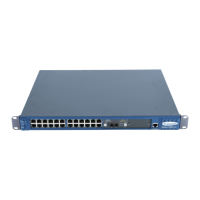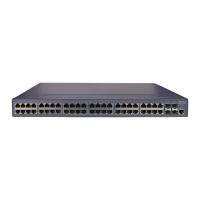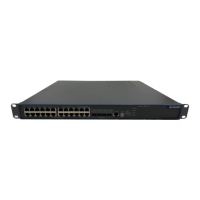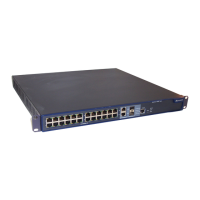Operation Manual – ARP
Quidway S3900 Series Ethernet Switches-Release 1510 Chapter 2 Resilient ARP Configuration
Huawei Technologies Proprietary
2-2
Operation Command Description
Enable the Resilient ARP
function
resilient-arp enable
Required
By default, the Resilient
ARP function is enabled.
Configure the VLAN
interface through which
Resilient packets are sent
resilient-arp interface
Vlan-interface vlan-id
Optional
By default, Resilient ARP
packets are sent through
VLAN 1 interface.
Note that the above configuration specifies the VLAN interface through which
Resilient packets are sent, while all the VLAN interfaces can receive Resilient ARP
packets.
2.3 Displaying Resilient ARP
After the above configuration, you can use the display command to display the
operation status, and verify the configuration effect through the displayed information.
Table 2-2 Display Resilient ARP
Operation Command Description
Display
information
about the
Resilient ARP
state
display resilient-arp [ unit
unit-id ]
The display command can be
executed in any view
2.4 Resilient ARP Configuration Example
I. Network requirements
There are four units in an IRF network: unit 1 to unit 4. Unit 1 and unit 3 connect to
another switch (Switch) through port convergence. If the connection between unit 1
and unit 3 and the connection between unit 2 and unit 4 break off, there will be two
Layer 3 switches with the same configuration in the network. In this case, problems
occur in packets forwarding between the fabric and the Switch. You can enable
Resilient ARP function for the fabric to avoid the problems. For security concerns, you
need to enable MD5 authentication function. The ports through which unit 3 and unit 4
connect to the Switch belong to VLAN 2.

